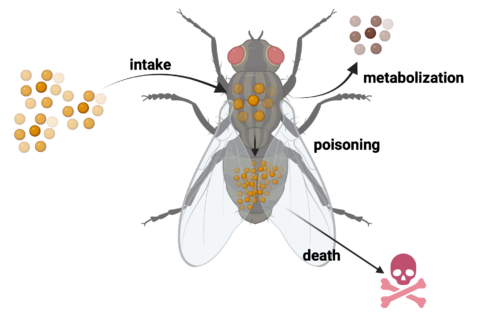MC-Signals for the Neutralization of Insect Populations in Confined Environments (MC-SNIPE)

Molecular communication is an emerging field of research field that considers the transmission of information via molecules rather than electromagnetic waves. This not only allows the communication between nodes at the nano- and microscale, but has also has potential applications in macroscale scenarios to either facilitate interaction with biological entities or to interfere with their natural communication.
A particular macroscale application is pest control in agriculture, where molecular signals can be used not only to observe the behavior of insects, but also to actively disrupt the mating or foraging behavior of pests. Simplified experiments in confined environments facilitate a fundamental understanding of the evaporation of signaling molecules and their uptake by insects.
In this project, a theoretical model for such experiments in confined environments should be developed and validated.
Main Objectives
- Development of a suitable model for the evaporation of signaling molecules in confined environments. Based on the considered system, suitable simplifications (e.g., well-mixed, reduction of spatial dimensions) shall be investigated.
- Development of a simulation model for the signaling molecule reception process of insects . The starting point for the model is an existing kinetic model for the uptake and processing of signaling molecules by insects.
- Development of an end-to-end model for the MC system, including models for evaporation, propagation, and uptake of signaling molecules.
- Extensive analysis of the model parameters and their influence on the overall system.
- Optional: Comparison of the developed models to experimental results and refinement of the models.
Should you be interested in exploring this topic, please do not hesitate to contact Bastian Heinlein or Dr. Maximilian Schäfer. Further details about the project can be found in the thesis proposal.